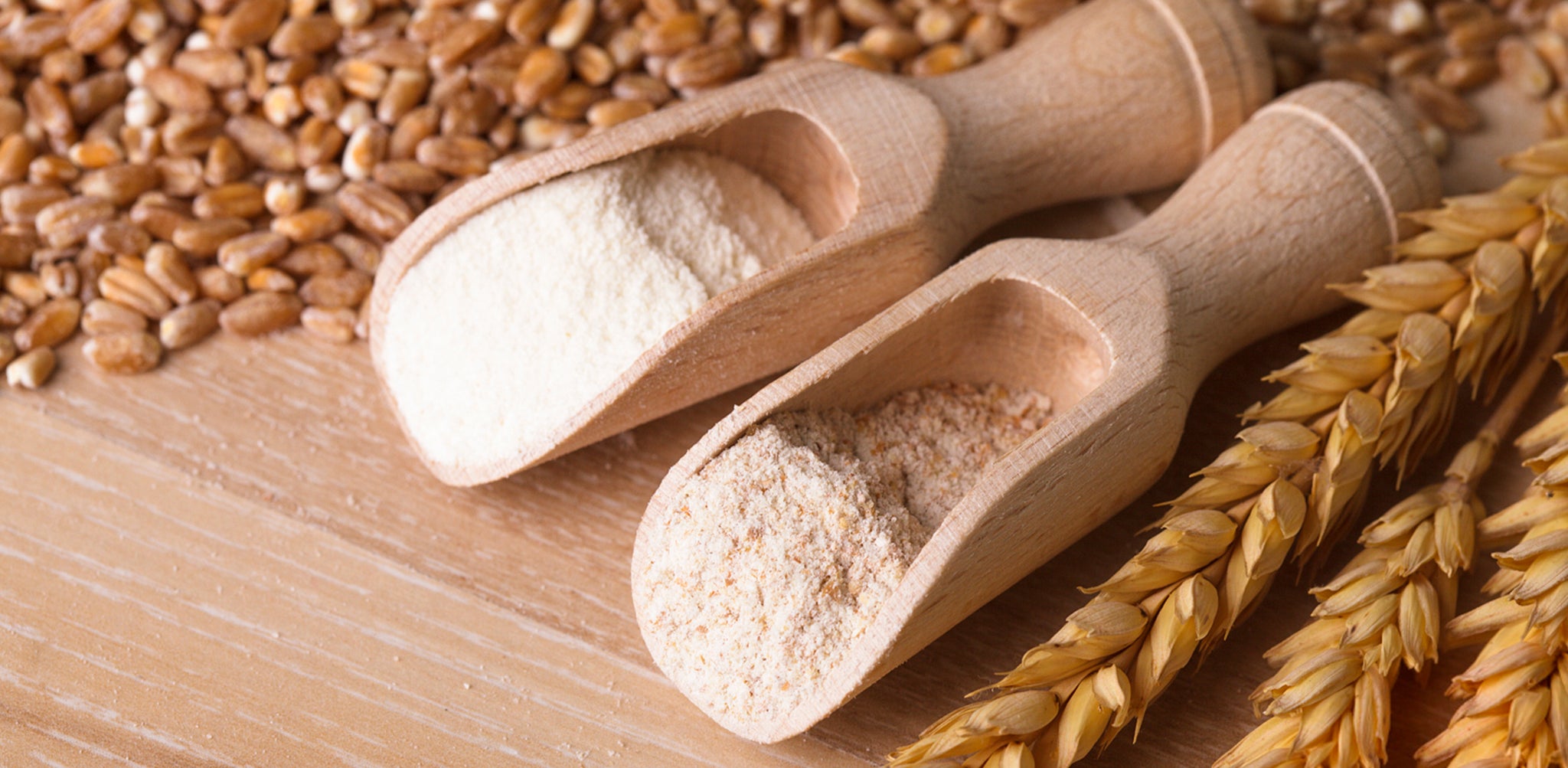Baking Lesson 102: Knowledge of Different Types of Flour

What’s The Difference Between Different Types of Flour?
When it comes to flour, what really differentiates flours is the protein content. Flour made from high-protein wheat (10-14% protein content) is “hard wheat" and flour made from low-protein wheat (5-10% protein content) is “soft wheat”. The higher the protein content, the more gluten it has. And the more gluten it has, the more strength it will have!
So if you want to make a dough that is bouncy and holds its shape, you need flour with a high protein, high gluten content. But if you want to make delicate, tender baked goods like cakes or pastries, you'll need low-protein flour.
Different Types of Flour
WHEAT FLOURS
1. All-Purpose Flour
When you read a recipe that just calls for "flour," you can be 99.99% sure they're referring to all-purpose flour. If you can only have one type of flour at home, make it this one. It's the most versatile, and usually the cheapest.
- Protein Content: 10-12%
- Best For: Pretty much everything - it's called all-purpose for a reason. It’s perfect for cookies, cakes, breads, brownies, biscuits, muffins, pie crusts, pancakes, pasta, pizza dough… and the list can go on for a while.
2. Cake Flour
Cake flour has the lowest protein content of all flours, which helps to create softer, more delicate baked goods. It usually goes through a bleaching process that weakens the gluten - meaning it absorbs more liquid and sugar than all-purpose flour, which means you'll end up with a moister cake.
- Protein Content: 5-8%
- Best For: Cakes, Angel Food Cake, Sponge Cake, Biscuits, Muffins and Scones.
3. Pastry Flour
Pastry flour is also fine in texture, but has higher protein content than cake flour. It's like the best all-purpose flour and cake flour rolled into one! It makes fluffy and soft pie crusts and and delicious cookies. And also melt in your mouth bread sticks.
- Protein Content: 8-9%
- Best For: Pie Crusts, Cookies, Bread Sticks, Tarts, Pound Cake and Muffins.
4. Self-Rising Flour
Self-rising flour is essentially all-purpose flour with baking powder and salt added. You don't want to swap self-raising flour for other flours in the recipe, as those two ingredients will affect the rest of the recipe. It's best not to use it unless the recipe specifically calls for it. Since it contains baking powder, it will start to lose its potency after about 6 months.
- Protein Content: 8-9%
- Best For: Pancakes, Scones, Biscuits and Baked Goods That You Want A Hight Rise.
5. 00 Flour
00 Flour might sound like some sort of James Bond code name, but it just means doppio zero flour. It's super good, it's Italian, and it's expensive. It does provide a different texture than all-purpose flour in the finished product, but unless you're dead set on making an exact replica of an Italian family recipe, it's usually fine to use all-purpose flour and give your wallet some room to breathe.
- Protein Content: 11-12%
- Best For: Pastas, Thin Pizza Crusts and Crackers.
To Be Continued…



Leave a comment